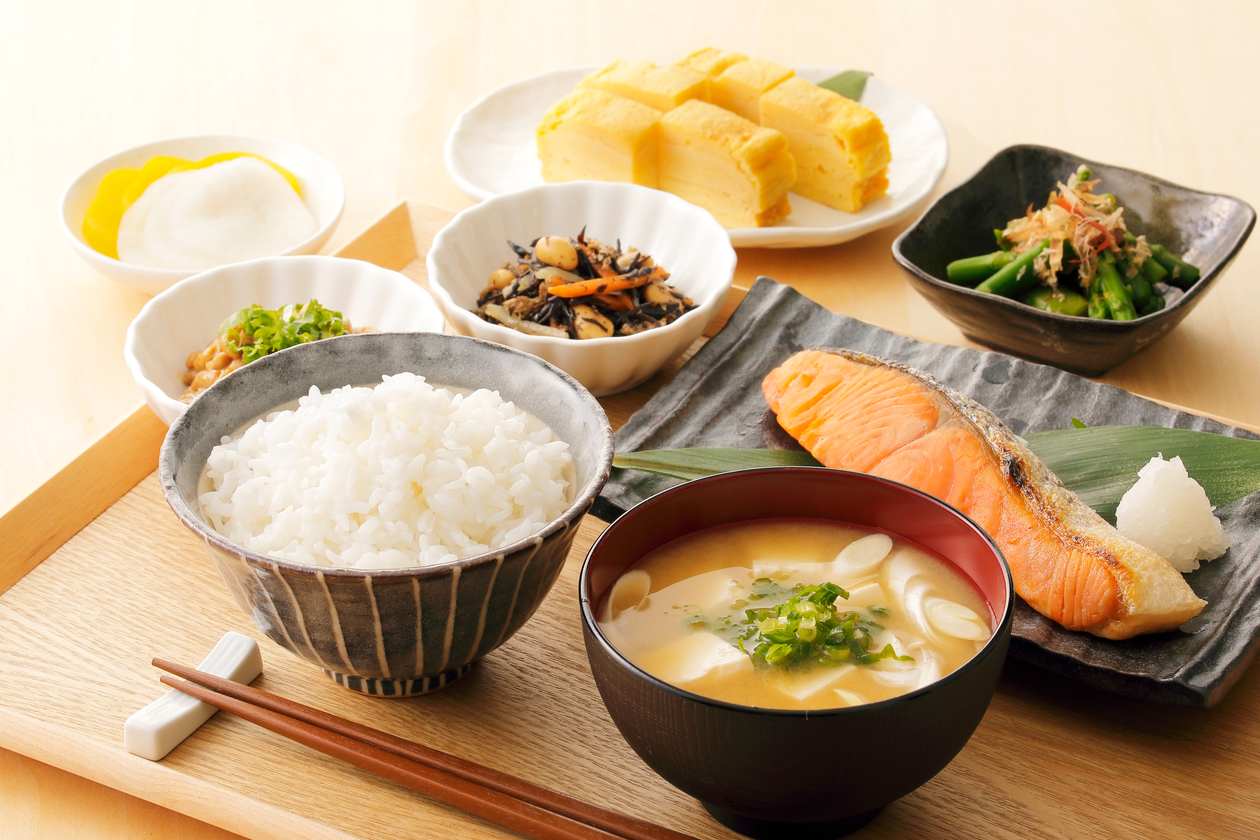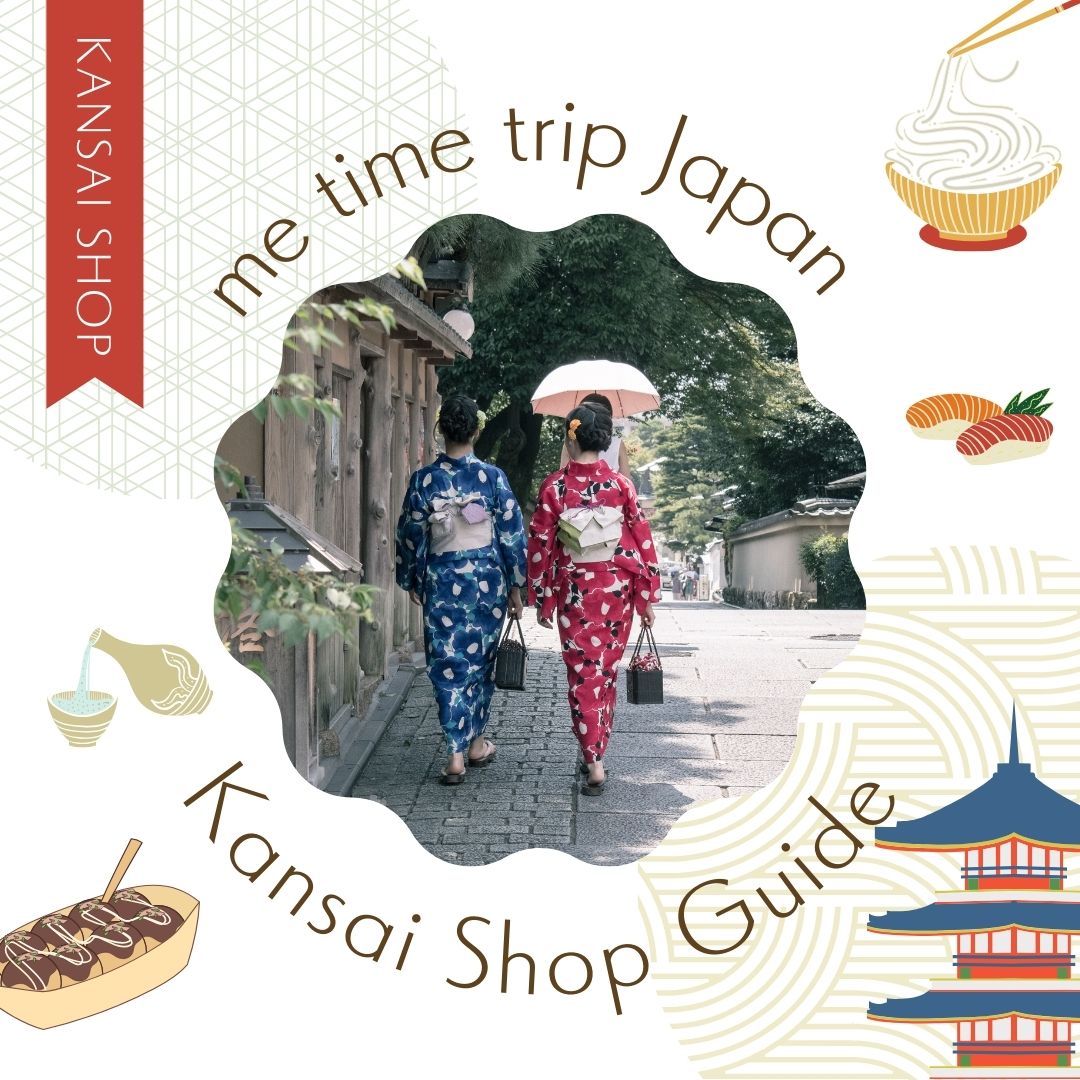Typical Japanese meal consists of cooked Japonica rice as the staple food, a main dish of either meat or fish, and lighter side dishes along with a bowl of soup and some pickles.
This style has long been called “Ichi-ju san-sai,” in other words, one type of soup together with three kinds of dishes.

Our staple food is typically white rice cooked by takihoshi method.
Usually it is cooked in the rice cooker with fixed quantities of rice and water. Therefore, when there is much water left, rice is boiled, and then, once water becomes less, it is steamed. Japanese favor puffy rice which contains enough water without a hard core.
Those days, due to health reasons or one’s preference, some eat rice mixed with barley or miscellaneous grains, and so, small packages of those grains are popular in the market.

Other than tasteless plain rice, there are different arrangement of rice, such as “takikomigohan,” which is cooked with some vegetables and seasonings, and “mazegohan,” which is mixed with other ingredients and vinegar once after rice is cooked.
Also, “onigiri” rice balls, with which you might be familiar at convenience stores, is staple food in Japan.

Staple food other than rice include carbohydrate such as noodles and bread, and in that case, menu does not follow “one soup three dishes”, but “hitos-sara syusyoku (or one dish of staple food)” style is employed.
For example, ramen, curry and rice, yakisoba, and chahan (or fried rice) are all in this category.
However, Japanese tend to prefer eating meals with side dishes or soup, such as gyoza with ramen, salad and fukujinzuke pickles with curry and rice, as well as soup with chahan.

Dishes coming with rice is usually called “okazu,” which can be either sashimi raw fish, or grilled fish, or local food of the region, or own home cooking, etc. It is an interesting area to learn about Japanese dietary.
For example, there are tendencies that meat dishes are eaten a lot in the mountainous community as there are many stock rising farmers, and seafood dishes are often found along with the coastal lines. So, if you want to know more about those dishes of ordinary homes, you should visit local set meal or Japanese restaurants. You can find and enjoy the meal unique to the area.

Moreover, as ordinary home dishes, Japanized western and Chinese cuisines, in other words, dishes arranged from foreign cuisines are also very popular here.
At supermarket, you can find “seasoning mixture” to easily bring back the same taste of Japanese homey dishes. How about getting some for your souvenirs?

Soup dishes include miso soup, made from “miso,” the representative of fermented food in Japan, and clear soup made with rich stock and salt. As well as okazu, miso soup also shows the characteristic of the region.
For example, in Kansai region including Osaka, soup stock made from kombu and rather sweet miso soup made with white miso are mainly cooked.
On the other hand, in Kanto area including Tokyo, soup stock from bonito and mixed miso are used since rather dark and strong miso soup are often preferred.
As for Tokai region located in the center of Japan is famous for “akadashi” made with “red miso” or bean miso.

Depending on the ingredients such as rice, barley, and soybeans, and its making process, taste of miso would be different from one another.
Soup ingredients also have a wide variety including tofu, green onions, and wakame seaweed. It gives different taste from day to day.
Using different ingredients, some changes are given in daily miso soup. Thus, with a variety of ingredients and small arrangement added, Japanese people enjoy a variety of meal every day.

“Tsukemono (or pickles)” are also essential on everyday table of Japanese people, and it is also called “Ko-no-mono” or “Oshinko”.
It has long been enjoyed as a preserved food. A variety of ingredients are pickled with salt, vinegar, or sake lees to add some flavor.
Japan’s ancient capital “Kyoto” is famous for many vegetable pickles, especially “Senmaiduke” of daikon radish as the main ingredient.

“One soup three dishes” style is the base of Japanese dietary. It is served as the menu called “teishoku or set meals” at restaurants.
At those chain restaurants such as “Yayoiken,” “Maido-ookini shokudo” and “Machikadoya,” and family targeted restaurants like “Gust” and “Washoku Sato,” you can enjoy those set meals reasonably.
Especially at lunch time, there are many lunch only specials you can find in town, so, please enjoy “teishoku set meal of one soup three dishes” during those lunch hours.
*The information herein is as of January 2020.


